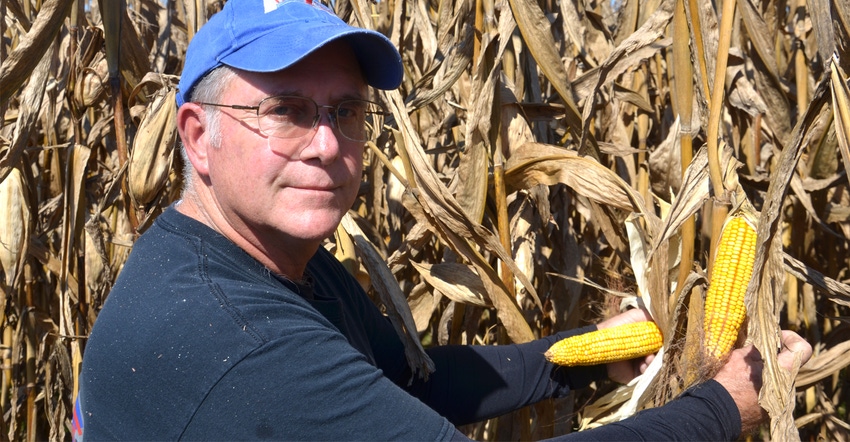
Don Zolman, Pierceton, Ind., likes planting corn at high populations in narrow rows. For the past two years, he’s planted in twin, 20-inch rows using a John Deere planter specially built for this row configuration. Stine Seed, chief promoter of the twin-20s concept, offered incentives for customers buying that planter. Now the company is going a step further and offering a unique pricing system that makes it economically feasible to plant at high seeding rates.
�“We didn’t quite see the performance in 2016 as we expected, but we’re staying with it,” Zolman says. “Compared to 30-inch rows, it’s still delivering a sizable yield increase.”
Raises management needs
Zolman believes equidistant placing of plants is a huge plus. While the twin-20 configuration doesn’t quite achieve equidistant spacing, it comes closer than any other approach tried commercially. Spacing plants out makes sense, he notes. It improves light interception and should promote better use of nutrients.
“One concern is consistency of ear size,” Zolman says. “We don’t have all the answers yet. Some ears are bigger than others. Obviously, not every plant is totally happy with its environment.”
Whether that’s related to variability in soil compaction or soil fertility, Zolman isn’t sure. “One thing this system does is force you to step up your management,” he says. “You notice things like varying ear size.”
Zolman typically plants at 48,000 to 50,000 seeds per acre on irrigated fields, and 45,000 to 48,000 seeds per acre on dryland. Planting at these high rates makes seed cost an issue. �“Stine is addressing it, and that will enable us to keep using this system,” he says.
Unique price structure
David Thompson says Stine Seed has adjusted its pricing policy for corn compared to past years. He is the national sales marketing director.
“We’re moving toward a seed-cost-per-acre instead of seed-cost-per-bag strategy,” he explains. If you’re planting at high populations, there’s a base rate cost per acre. Then at higher seeding rates, discounts apply.
“The goal is to make certain that it’s not cost-prohibitive to continue planting in twin 20s or other narrow-row systems at higher seeding rates,” he says.
Future trends
Bill Kissinger believes the future for higher yields lies in higher populations in narrow rows. Kissinger, a regional sales agronomist for Stine Seed, has a number of customers planting in twin 20s. He also has several customers planting in straight 15- or 20-inch rows. What’s important is finding out what works best for you, and learning how to manage it, he says.
“We have farmers all over the board on seeding rates, from 34,000 to 36,000, to 50,000 to 52,000 seeds per acre,” he says. “In terms of twin 20s, we’re still dialing in what works best.”
Meanwhile, plant breeders test new hybrids at populations varying from 40,000 to 80,000 plants per acre, Kissinger reports. All answers on how to manage hybrids at these populations in these configurations aren’t in yet. But he sees trends pushing that direction for the future.
About the Author(s)
You May Also Like




